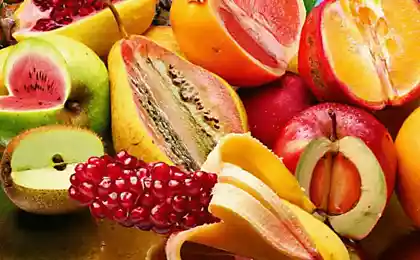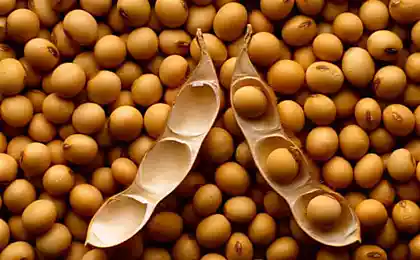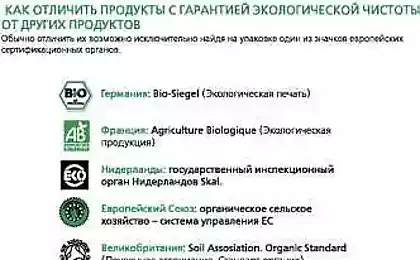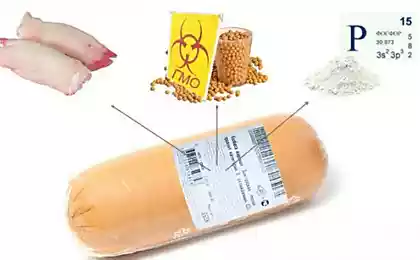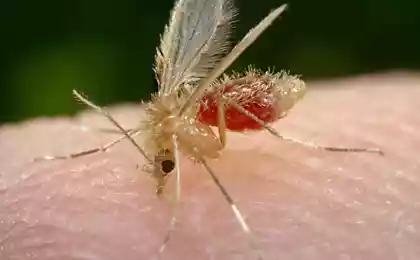587
10 common foods that have been genetically modified initially
Many people are against GMO foods and do not understand what they represent. In principle, GMO - an organism that has been modified in the laboratory by introducing therein DNA from another organism. This is usually done in order to create a plant resistant to pesticides or resistant to pests. While GMO products have long existed around us, many people do not know that right now are their consumers. < Website tells the story of well-known products, which initially have been genetically modified.
1. Honey is difficult to imagine that honey contains a GMO as a product of producing bees. The bees must receive from some pollen and pollen collected US indiscriminately - both plants containing GMO or standard, unmodified plants. Most often it is corn, which has problems with drift air pollution and its pollen. Bees around the world gather pollen from a variety of crops, and farmers engaged in beekeeping, harder to ensure that their products do not contain GMO.
At the same time, scientists are working on genetic modification of bees themselves. This is done for several reasons, and although transgenic bees are not currently used for the production of honey, this could happen in the near future.
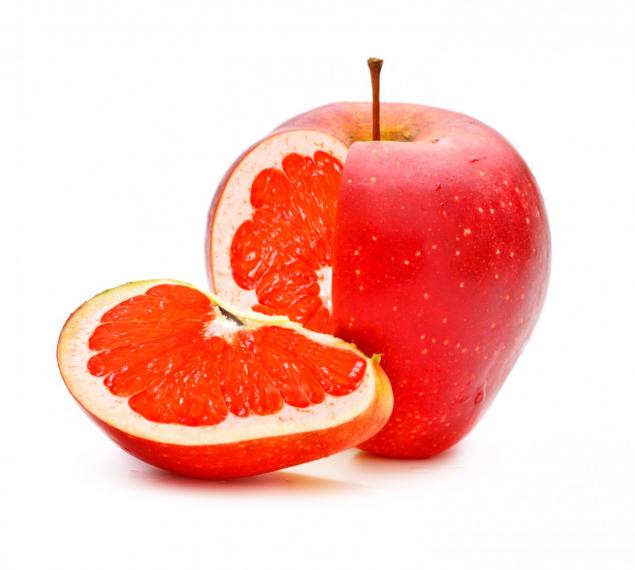
2. Soy Some health conscious people try not to eat red meat and prefer soy products. According to some reports, in the United States, 93% of soybean contains GMOs. This culture is resistant to the herbicide, allowing farmers to spray them for weed control, and the soybean itself remains intact.
You may think that soy is a small part of your diet, but actually soybean oil and derived from soy ingredients are in all kinds of chips, whole wheat bread, crackers, cookies, pizza, cereal bars, dressings, mayonnaise, granola bars and absolutely obvious products such as soy milk, soy sauce, and tofu. Given that only 7% of soybeans grown and harvested in the United States, do not contain GMOs, the likelihood that you eat genetically modified soybeans is very high.
3. Most of the sugar produced from sugar GMO plants - often from sugar beet and sugar cane, which are grown in the United States with GMO. In 2010, the US Department of Agriculture (USDA) has ceased to regulate the cultivation of sugar beet varieties «Roundup Ready». This has allowed farmers across the United States to go to this type of herbicide-tolerant sugar beet created by Monsanto Corporation (Monsanto). As of 2012, the genetically modified sugar beets accounted for about 90% of the total sugar beet harvest in the United States, which means that any sugar produced from that beet and used in our favorite foods contain GMOs.
It is difficult to list all the products in which sugar is used. If the composition of the product specified sugar or gaining popularity corn syrup, in 90% of cases it is genetically modified food.
4. Cotton We know what you think - you do not eat cotton. Yes, you should not eat cotton balls or chew on your shirt, but cotton has other applications. Genetically modified cotton is about 90% of the cotton grown in the United States. Cotton is used in the manufacture of cottonseed oil, which is added to the food for over 100 years. In the United States it is mainly used in salads as a vegetable oil, that is at about 56% of the food use of cotton in the country. The remaining 36% is used for frying foods such as French fries and potato chips.
If you think that you can avoid the use of products made with the use of cottonseed oil, you probably are wrong. In the United States, many products - such as crackers, pretzels, chips, sunflower seeds, pancakes and even some types of cosmetics - contain cottonseed oil far more often than any other oil
.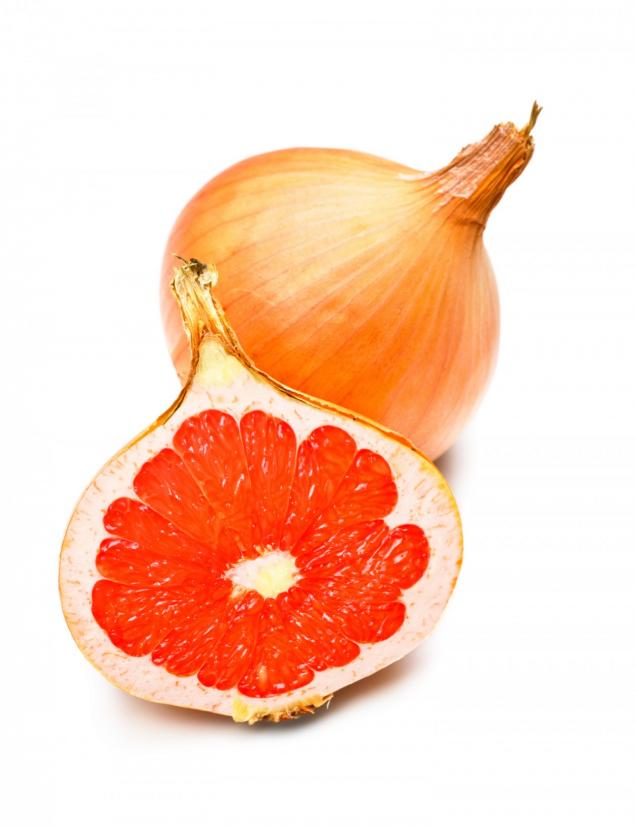
5. Canola Rapeseed Oil, canola, so beloved by the majority of restaurants, is produced from genetically modified cultures. 90% of rape in the United States - GMOs. This creates problems for those farmers whose crops are in the natural seed. At the cross-pollination of conventional plant pollen mixed with pollen of plants containing GMOs.
Canola oil is a part of many products, and almost certainly made from genetically-modified canola. It is products such as peanut butter, frozen potatoes (French fries, hash browns, etc. D.), Chocolate syrup, rye bread, citrus sodas, pretzels, mayonnaise, some cereals, chips, crackers, cereals, cereal bars, margarine and popcorn.
6. Potatoes In 2014, the US Department of Agriculture has approved a new variety of genetically-modified potato for the US market, which reduces the amount of acrylamide during frying. Acrylamide - a chemical that is produced during frying, and is believed to contribute to cancer development. In addition, a new variety is resistant to mechanical damage, which makes it more profitable in the long term. The product is intended for the market of chips (French fries and potato chips).
An interesting fact is that the potato variety introduced genes to other species of potatoes, rather than the genes of organisms of other species. This type of genetic modification may appeal to people who would prefer to avoid GMOs in general, reducing the gap between the so-called "culture of Frankenstein" and cross-pollinated. This is not the first genetically modified potatoes, which appeared on the market.
7. Papaya In the case of papaya genetic modification has helped to save this species from possible extinction. The papaya, especially if it was grown in Hawaii, almost certainly contains GMOs. For most of the twentieth century, papaya trees suffered greatly from the papaya ringspot virus (PRSV), and in 1960 the production of almost all papaya had to move from the island of Oahu, in order to avoid the disease. Unfortunately, in 1992 it overtook VKPP plants and on the island of Pune. By this time in the laboratories of papaya variety has been created resistant to the virus, but it is not cultivated until it was too late. By the end of the 1990s, we began planting genetically modified papaya that has passed rigorous testing. Thus papaya as a species was saved.
8. Yeast Most people that are not related to baking, rarely think about yeast, but even if you do not eat bread, yeast - a necessary ingredient when creating alcohol by malolactic fermentation. Wine Institute said that genetically modified wine yeast ML01 should not be used when creating wine. But the Institute of wine - not the governing body and can only make proposals
. Since the use of ML01 is not regulated, the yeast used to make wine, which we enjoy. According to an article in The Vancouver Sun, «if you drink red wine from the United States or Canada, it is likely that you have already tried ML01»
. Scientists from the University of British Columbia established ML01, to help people with migraines and hypertension. Many people through the consumption of red wine headache, and aim to create a new organism - to put an end to it. The most interesting aspect ML01 design is that unlike other GMO it benefits directly to consumers rather than producers, though these categories may overlap.
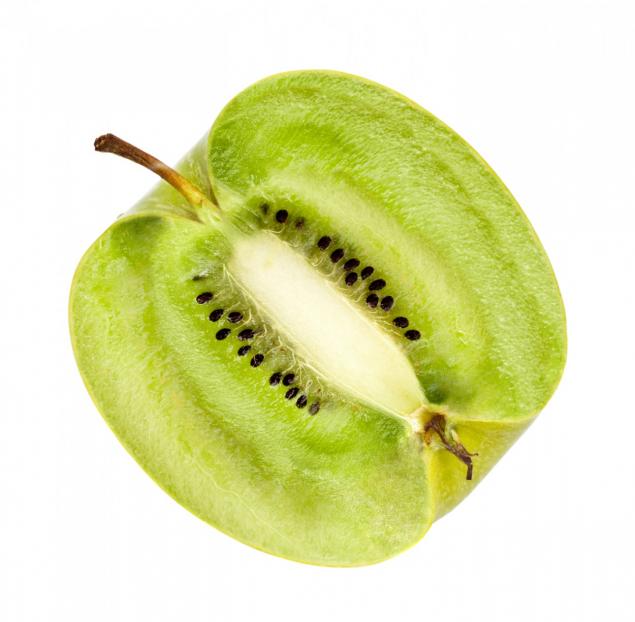
9. Tobacco Let's be realistic: smoking is dangerous to health. You know that. We know that. Despite this, the tobacco has been and remains one of the main cash crop in America, and about 90% of the tobacco grown in the US is genetically modified.
Tobacco suffers from some very dangerous pests, so for a long time, farmers and researchers are working to develop varieties resistant to pesticides. Most dangerous to harvest tobacco budworm, which lays its eggs inside the plant, and the larvae destroy it very difficult. To change the situation, scientists in the laboratories of tobacco was inserted into the DNA of DNA of other organisms.
10. Dairy In 2010, scientists have successfully changed the cows - so that they could produce milk, safe for children. Approximately 2-3% of children are allergic to cow's milk, which is the basis of most infant formulas. Allergic reactions to milk due to the presence of beta-lactoglobulin (BLG), which was isolated from a cow tailless found in New Zealand. Due to the use of cloning, the researchers were able to implant a cow egg cell with the genetic code tailless cows.
These ideas have not yet entered the market in the full sense of the word. But we have to use products derived from animals treated with genetically engineered growth hormone recombinant bovine (rBHG), which is used in dairy cattle in the United States to increase production of milk. Using rBHG is common for the entire dairy industry, so most of the dairy products are composed of a number of GMOs. This means that oil, milk, ice cream, cheese and all other dairy products is likely to contain GMOs.
via www.toptenz.net/10-foods-you-eat-you-didnt-know-were-genetically-modified.php
1. Honey is difficult to imagine that honey contains a GMO as a product of producing bees. The bees must receive from some pollen and pollen collected US indiscriminately - both plants containing GMO or standard, unmodified plants. Most often it is corn, which has problems with drift air pollution and its pollen. Bees around the world gather pollen from a variety of crops, and farmers engaged in beekeeping, harder to ensure that their products do not contain GMO.
At the same time, scientists are working on genetic modification of bees themselves. This is done for several reasons, and although transgenic bees are not currently used for the production of honey, this could happen in the near future.

2. Soy Some health conscious people try not to eat red meat and prefer soy products. According to some reports, in the United States, 93% of soybean contains GMOs. This culture is resistant to the herbicide, allowing farmers to spray them for weed control, and the soybean itself remains intact.
You may think that soy is a small part of your diet, but actually soybean oil and derived from soy ingredients are in all kinds of chips, whole wheat bread, crackers, cookies, pizza, cereal bars, dressings, mayonnaise, granola bars and absolutely obvious products such as soy milk, soy sauce, and tofu. Given that only 7% of soybeans grown and harvested in the United States, do not contain GMOs, the likelihood that you eat genetically modified soybeans is very high.
3. Most of the sugar produced from sugar GMO plants - often from sugar beet and sugar cane, which are grown in the United States with GMO. In 2010, the US Department of Agriculture (USDA) has ceased to regulate the cultivation of sugar beet varieties «Roundup Ready». This has allowed farmers across the United States to go to this type of herbicide-tolerant sugar beet created by Monsanto Corporation (Monsanto). As of 2012, the genetically modified sugar beets accounted for about 90% of the total sugar beet harvest in the United States, which means that any sugar produced from that beet and used in our favorite foods contain GMOs.
It is difficult to list all the products in which sugar is used. If the composition of the product specified sugar or gaining popularity corn syrup, in 90% of cases it is genetically modified food.
4. Cotton We know what you think - you do not eat cotton. Yes, you should not eat cotton balls or chew on your shirt, but cotton has other applications. Genetically modified cotton is about 90% of the cotton grown in the United States. Cotton is used in the manufacture of cottonseed oil, which is added to the food for over 100 years. In the United States it is mainly used in salads as a vegetable oil, that is at about 56% of the food use of cotton in the country. The remaining 36% is used for frying foods such as French fries and potato chips.
If you think that you can avoid the use of products made with the use of cottonseed oil, you probably are wrong. In the United States, many products - such as crackers, pretzels, chips, sunflower seeds, pancakes and even some types of cosmetics - contain cottonseed oil far more often than any other oil
.

5. Canola Rapeseed Oil, canola, so beloved by the majority of restaurants, is produced from genetically modified cultures. 90% of rape in the United States - GMOs. This creates problems for those farmers whose crops are in the natural seed. At the cross-pollination of conventional plant pollen mixed with pollen of plants containing GMOs.
Canola oil is a part of many products, and almost certainly made from genetically-modified canola. It is products such as peanut butter, frozen potatoes (French fries, hash browns, etc. D.), Chocolate syrup, rye bread, citrus sodas, pretzels, mayonnaise, some cereals, chips, crackers, cereals, cereal bars, margarine and popcorn.
6. Potatoes In 2014, the US Department of Agriculture has approved a new variety of genetically-modified potato for the US market, which reduces the amount of acrylamide during frying. Acrylamide - a chemical that is produced during frying, and is believed to contribute to cancer development. In addition, a new variety is resistant to mechanical damage, which makes it more profitable in the long term. The product is intended for the market of chips (French fries and potato chips).
An interesting fact is that the potato variety introduced genes to other species of potatoes, rather than the genes of organisms of other species. This type of genetic modification may appeal to people who would prefer to avoid GMOs in general, reducing the gap between the so-called "culture of Frankenstein" and cross-pollinated. This is not the first genetically modified potatoes, which appeared on the market.
7. Papaya In the case of papaya genetic modification has helped to save this species from possible extinction. The papaya, especially if it was grown in Hawaii, almost certainly contains GMOs. For most of the twentieth century, papaya trees suffered greatly from the papaya ringspot virus (PRSV), and in 1960 the production of almost all papaya had to move from the island of Oahu, in order to avoid the disease. Unfortunately, in 1992 it overtook VKPP plants and on the island of Pune. By this time in the laboratories of papaya variety has been created resistant to the virus, but it is not cultivated until it was too late. By the end of the 1990s, we began planting genetically modified papaya that has passed rigorous testing. Thus papaya as a species was saved.
8. Yeast Most people that are not related to baking, rarely think about yeast, but even if you do not eat bread, yeast - a necessary ingredient when creating alcohol by malolactic fermentation. Wine Institute said that genetically modified wine yeast ML01 should not be used when creating wine. But the Institute of wine - not the governing body and can only make proposals
. Since the use of ML01 is not regulated, the yeast used to make wine, which we enjoy. According to an article in The Vancouver Sun, «if you drink red wine from the United States or Canada, it is likely that you have already tried ML01»
. Scientists from the University of British Columbia established ML01, to help people with migraines and hypertension. Many people through the consumption of red wine headache, and aim to create a new organism - to put an end to it. The most interesting aspect ML01 design is that unlike other GMO it benefits directly to consumers rather than producers, though these categories may overlap.

9. Tobacco Let's be realistic: smoking is dangerous to health. You know that. We know that. Despite this, the tobacco has been and remains one of the main cash crop in America, and about 90% of the tobacco grown in the US is genetically modified.
Tobacco suffers from some very dangerous pests, so for a long time, farmers and researchers are working to develop varieties resistant to pesticides. Most dangerous to harvest tobacco budworm, which lays its eggs inside the plant, and the larvae destroy it very difficult. To change the situation, scientists in the laboratories of tobacco was inserted into the DNA of DNA of other organisms.
10. Dairy In 2010, scientists have successfully changed the cows - so that they could produce milk, safe for children. Approximately 2-3% of children are allergic to cow's milk, which is the basis of most infant formulas. Allergic reactions to milk due to the presence of beta-lactoglobulin (BLG), which was isolated from a cow tailless found in New Zealand. Due to the use of cloning, the researchers were able to implant a cow egg cell with the genetic code tailless cows.
These ideas have not yet entered the market in the full sense of the word. But we have to use products derived from animals treated with genetically engineered growth hormone recombinant bovine (rBHG), which is used in dairy cattle in the United States to increase production of milk. Using rBHG is common for the entire dairy industry, so most of the dairy products are composed of a number of GMOs. This means that oil, milk, ice cream, cheese and all other dairy products is likely to contain GMOs.
via www.toptenz.net/10-foods-you-eat-you-didnt-know-were-genetically-modified.php
Legendary Burpee exercise: a record number of burning calories!
The most incredible vehicles by mankind
